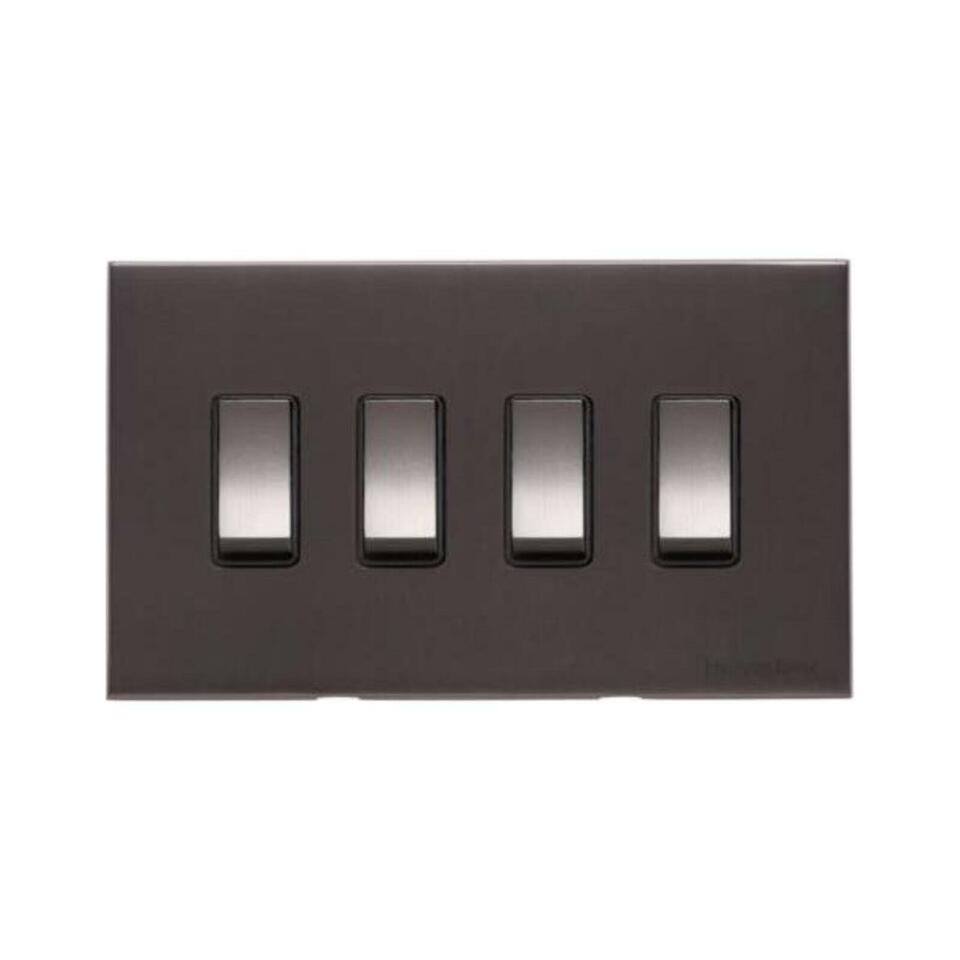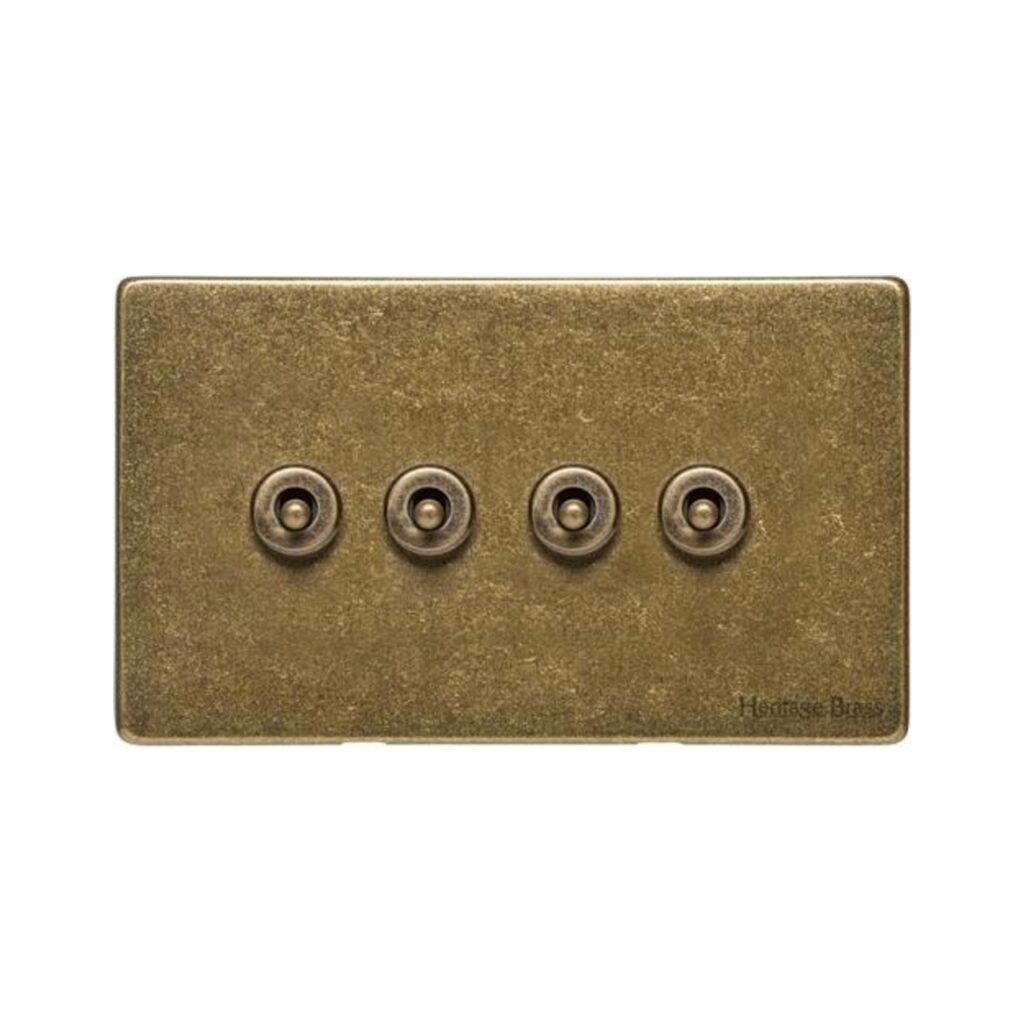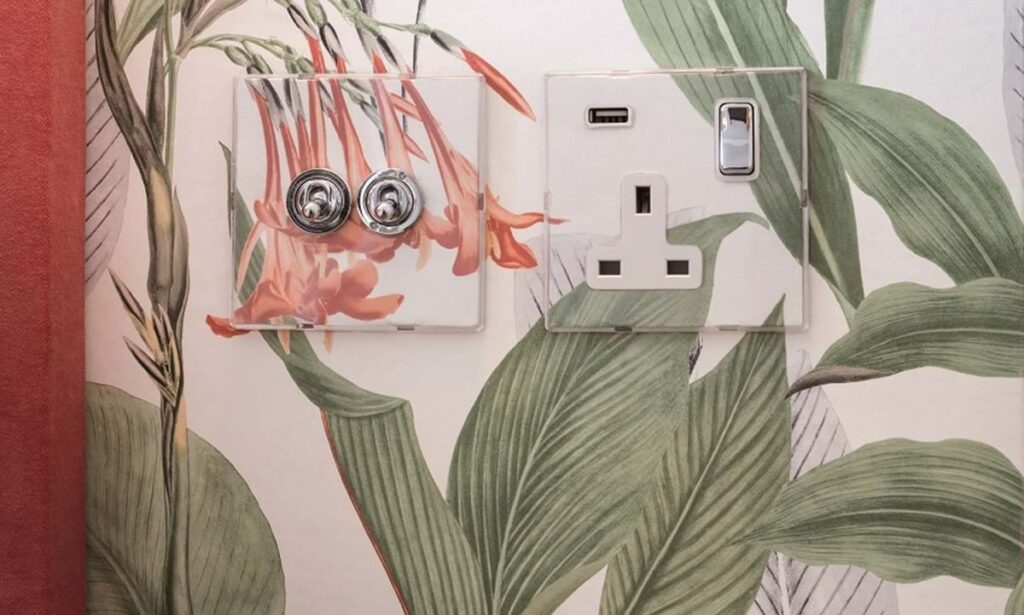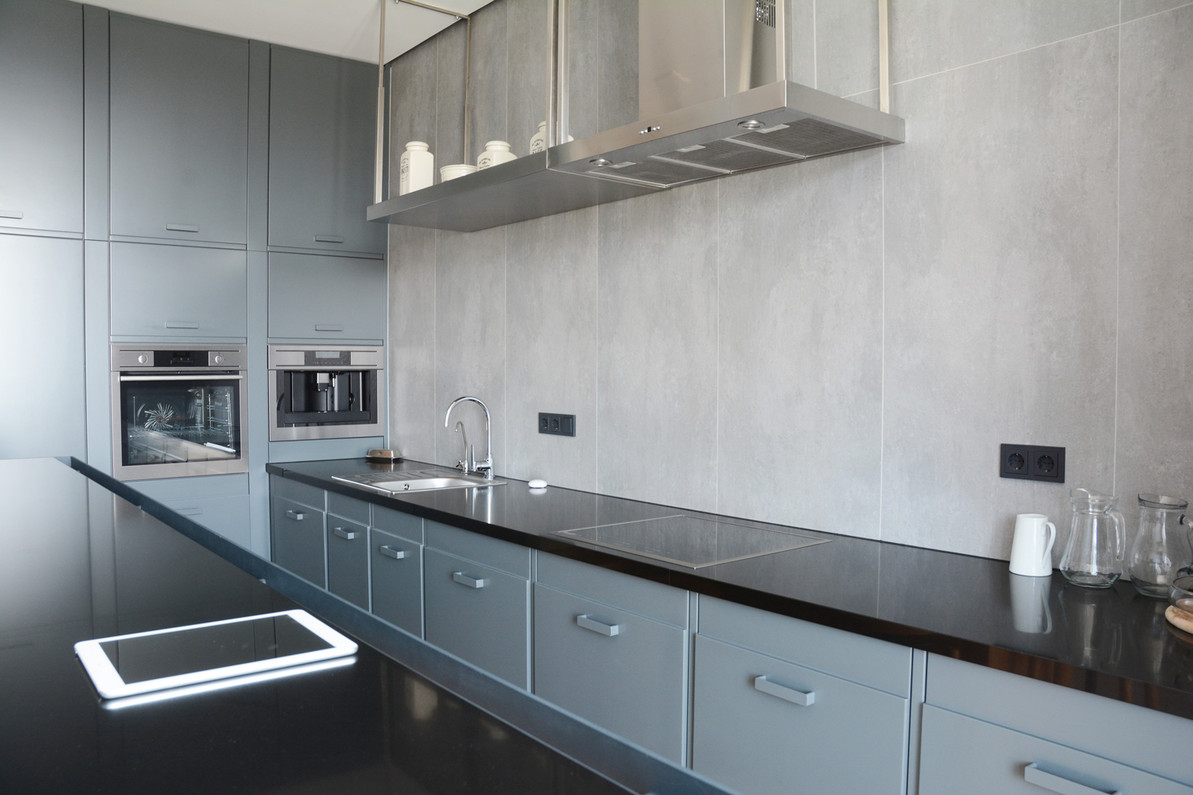Setting Up New Sockets and Switches: A Design Guide
While it is perhaps simple to think that light switches and electrical sockets are purely practical, think again. These are points of contact that are essential to interior design. They need to be easy to reach and use, and therefore, they need to be easy to spot. As such, it makes perfect sense to consider colour coding and arranging your switches and sockets.
That said, you need to consider more than just colours alone. What about switch and socket types? Plate finishes and materials used? What’s more – can you be sure that your chosen switch and socket plates will fit in with your existing decor? There is a lot to consider.
While practicality and accessibility are naturally key, it makes sense to think carefully about placement and style. At Arrow Electrical, we provide a variety of different switch and socket styles to inspire you. We perfectly understand that our customers are always looking for different finishes and touches! Why rely on the same old white plastic looks again and again?
Throughout this guide, we’ll link to some of our favourite designs available in our catalogue. In the meantime, let’s take a look at what you need to consider when matching switches to your interior setup.
Considering Switch Types
Yes, as unorthodox as it may seem, you need to consider the type of switches you set up when balancing interior design. The idea of a dimmer switch or two might work well in your mind, but will they do so well in practice? What about common rocker light switches? Have you considered motion control and touch panel switches, too?
Let’s not get ahead of ourselves. Rocker switch solutions are the most frequently installed across the UK. They are neat, simple, and beyond that, they are versatile. You could have a vibrant, modern bedroom in pinks and purples or a demure lounge in blues and greens. Either way, a simple rocker switch will hardly look out of place – it’s the safest bet.
That said, they hardly inspire versatility or style – and to some people, they can evoke a ‘cheap’ feeling. That’s certainly not always the standard, as our super-stylish Winchester 4-gang in matt bronze proves. We’ll come to finishes and colours, of course, shortly.

For classical or period rooms, you should ideally consider toggle switches, or in some cases, dimmers. These rounded switch knobs can evoke a less ‘clunky’ or ‘intrusive’ aesthetic. They also lend themselves to more industrial aesthetics of old. However, in a modern suite or room, they are going to look a little odd.
Touch switch installations work to the other end of the scale. These are ideal in highly modern and hyper-clean aesthetics. If your room or space is attempting to evoke a futuristic feel, it makes sense to stray away from the ‘older’ looks. That said, the more futuristic you swing, the more you might expect to pay. Be careful about the budget!
Above all, dimmer switches tend to travel the fine line between every look, perhaps more so than rockers. They are more practical and more suited to creating specific moods beyond the switches themselves. However, it still pays to keep their individual looks in mind, too.
What About Plate Types and Finishes?
What you’ll soon find, beyond the different types of switches available, is that they arrive in different finishes. Light switches and sockets no longer come in just the same old plastics. While that default white plastic finish is fairly neutral and unassuming, it’s hardly inspiring. If you want to ramp up the look of your home interiors, it’s time to consider different plate looks.
First of all, let’s consider screws. The default look of a socket or a light switch is usually a screw on either side of the face. That’s usually the case for sheer practicality. That said, you don’t essentially need to have your screws pointing outwards. In fact, there is such an option as a screwless or a flat faceplate.
Screwed faceplates tend to work well when you depend on metallic looks. The same applies if you are driving for a rugged or maybe even an industrial style. However, if you aim to add a touch of class or futuristic style, it makes sense to hide the screws. That said, your choice between screwed and screwless may depend on the fittings themselves.
Beyond this, think carefully about the build and finish of your light switch or socket plate. Copper, brass and nickel tend to work brilliantly if the rugged look is on your radar. However, if you’re into a classical aesthetic, you should consider bronze as a priority. That said, the existing look and colour of your room will dictate which finish works best.
Our vintage 4-gang dolly switch (in rustic brass), for example, could work wonders in an industrially-inspired room. Rustic finishes are great for rooms where you have dark colours and metallic tones, too. They won’t stand out too much or demand all of the attention at once.

However, consider cleaner faceplates and finishes if you’re going for modern or bright. Metallic may not always be the way here – which is why the old white plastic style is still in vogue!
Matching Your Decor
A crucial part of finding the best light switch and socket looks for your rooms will depend on your decor. Yes – you might enjoy the look of the odd industrial switch, but will it really suit a period setting? Consider the existing setting and atmosphere you’re creating – and above all, consider colour.

Many light switches and sockets come in white, chrome or black as standard. As we’ve seen, bronze, brass and copper are also prime choices. However, think about the base colours of your space. If you use a lot of bright, modern colours and emphasise fun, a white plate might work well.
Darker rooms are likely to do well with deeper metal plates or even black plating. These tend to be statement options – and are sometimes even considered accent assets. Crucially, colour speaks for a lot regardless of the period or aesthetic you may be looking for. Therefore, if you are unsure about the exact shade or hue for your switches, it may be safer to play it neutral.
When designing a room, it’s likely best to consider your switches and sockets as part of the blueprint. It is much easier, arguably so, to set up the style of sockets that will work best along with the rest of your decor. Otherwise, you are at risk of creating a look or disrupting your interior style without meaning to.
Matching your decor with different finishes and touches isn’t always going to be easy. That’s why it is always worth keeping an open mind if you are just getting started with your design. It’s also another great reason to shop with Arrow Electrical – we bring together some fantastic styles to suit various looks!

For example, a great neutral look is always possible with our Clarity perspex USB sockets. These socket setups are appealing, contemporary, and allow for ease of connection with phones, tablets and more. Finding a modern socket with a classical style is always possible – but if you’re unsure, play it safe!
Consistency is Key
An essential point to remember with socket and switch setups is, of course, consistency. If you are going to change one or two sockets, you need to change them all. Unless you lead with a particular feature space, it pays to balance your aesthetics room by room. Is your lounge Victorian and your dining room Edwardian, for example?

Think about how style and colour bleed and blend across your home. You may have one or two rooms that are ‘character’ spaces that stand on their own. However, a more lasting and satisfying effect may be to ensure that all of your areas and touches follow suit. Therefore, it perhaps stands to reason to invest in several sockets and faceplates that follow the same style.
Consistency is one of the most delicate aspects of interior design, full stop. However, sockets and switches can often get overlooked. Many of us think of them as practical fittings rather than parts of the overall look! However, imagine the frustration you may feel if, for example, you find your switches don’t blend. You could have already papered room after room before this is the case!
It’s therefore vital to try and choose a theme and – as brave as this may sound – to try and stick to it! It is another crucial reason why using a neutral switch or socket look may help. If you are completely set on a period or vintage look, then handily, there are options available. The point we’re making here is that even something as small as switches can impact your consistency.
A great-looking vintage light switch solution may be our 2-gang trailing edge dimmer (in satin nickel). While superb for period spaces, this switch design fits the bill in simpler, less demanding setups. It’s one of our favourite choices for versatility alone!
Be Careful with Your Walls
Ultimately, regardless of the style and colour of switches and sockets you look for, be careful with wall conditions. Flat walls are perfect for setting up new faceplates and sockets. That’s because – funnily enough – they are flat and uniform, and there shouldn’t be the need for a spirit level.
However, if you know that you are setting up on a less even surface, things can get complex. This is because a less-than flat surface is likely to appear crooked or even damaged if you set up the wrong switches. You may need to set sockets or switches with back boxes, for example, instead of going flush to the wall.
Crucially, it’s worth remembering that if there is a will, there is a way. You will likely set up modern switch plates on wonkier walls if you are careful enough. If you don’t have help to hand and are going at it alone, arm yourself with measuring tools. Pick a spirit level and a tape measure, for example.
It’s also worth remembering that if you’ve recently plastered a wall, it may not be ready for a new socket – yet. Plastering and wallpaper paste can have a nasty habit of staining some fittings. Therefore, it really does pay to be careful. In some cases, you may need to wait for months at a time for things to dry off completely.
If you’re in doubt at this point, it’s an excellent idea to consult your plasterer (if you’ve paid for the work). If you’ve gone at it alone, then you may need to seek outside advice – and to be patient! The last thing you’ll want is to set up sockets and switches on a wall that’s not yet set. It’s going to mean heading back to the drawing board!
Therefore, the golden rule is only to start buying and setting up new switches and sockets when your walls are ready. We understand – getting started is exciting! However, for the best results, a little patience goes a long way indeed – you can trust us on this!
Conclusion
Yes – it’s easy enough to overlook switches and sockets across your home. However, they serve more than just a practical purpose! It’s important to remember that even small touches such as these can have huge impacts on your wider design. Interior design can often be so delicate, and we’re here to help you make a huge difference.
Arrow is pleased to present a wide range of different switch and socket looks to transform and/or tie up your home design. Are you thinking of changing to dimmers or touch panels? What about something a little more classical? Take a glance through our wider range and see if there are any ideas and innovations that appeal to you.
Recent Posts
-
Outdoor Lighting Safety: Using Standard Bulbs in Waterproof Fittings
Waterproofing and safety are paramount in outdoor lighting. Rain can infiltrate outdoor lighting sy …22nd Apr 2024 -
Waterproof and Stylish: Bathroom Ceiling Lights for Every Style
Choosing the right bathroom ceiling lights ensures both functionality and aesthetics, as they provi …9th Apr 2024 -
The Art of Welcoming: Porch Lighting Ideas for Every Home
Porch lighting helps create a welcoming atmosphere and enhances security by illuminating entryways …9th Apr 2024




